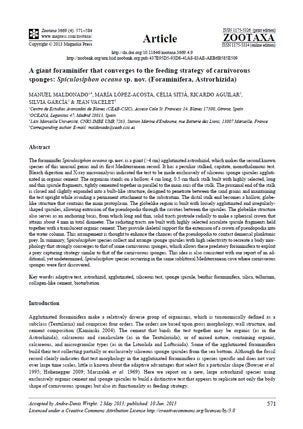Report | June 11, 2013
A giant foraminifer that converges to the feeding strategy of carnivorous sponges: Spiculosiphon oceana sp. nov. (Foraminifera, Astrorhizida)
Agglutinated foraminifera make a relatively diverse group of organisms, which is taxonomically defined as a subclass (Textulariia) and comprises four orders. The orders are based upon gross morphology, wall structure, and cement composition (Kaminski 2004). The cement that binds the test together may be organic (as in the Astrorhizida), calcareous and canaliculate (as in the Textulariida), or of mixed nature, containing organic, calcareous, and microgranular types (as in the Lituolida and Loftusiida). Some of the agglutinated foraminifera build their test collecting partially or exclusively siliceous sponge spicules from the sea bottom. Although the fossil record clearly indicates that test morphology in the agglutinated foraminifera is species specific and does not vary over large time scales, little is known about the adaptive advantages that select for a particular shape (Bowser et al.
1995; Hohenegger 2009; Marszalek et al. 1969). Here we report on a new, large astrorhizid species using exclusively organic cement and sponge spicules to build a distinctive test that appears to replicate not only the body shape of carnivorous sponges but also its functionality as feeding strategy.


